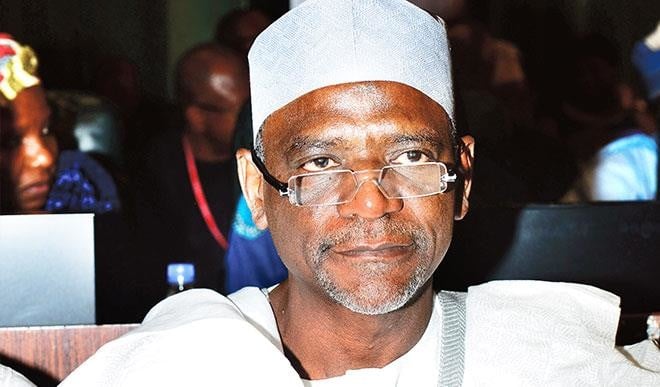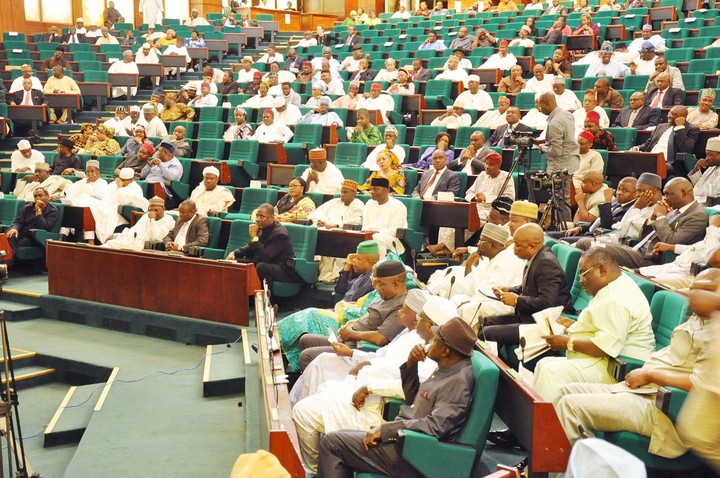Presently, it looks like the harvest from investment in education is a long-term one, a people desperate for relief from socio-economic hardship are unlikely to wait for; just as a government looking for low-hanging fruits to assuage the feeling of the people may be unlikely to adopt it as an early option.
That was the scenario in which Education Minister Mallam Adamu Adamu recently presented a Roapmap for the transformation an underused sector, which should be a critical success factor for sustainable national development. Yet, we cannot run away from a growing world-wide acceptance of the vital role of education.
Messrs E. Orji Kingdom and Job Maekae elaborated on this in their paper, “The Role of Education in National Development: The Nigerian Experience,” in the European Scientific Journal.
“A nation develops in relation to its achievement in education,” they noted. “This explains why contemporary world attention has focused on education as an instrument of launching nations into the world of science and technology and with consequential hope of human advancement in terms of living conditions and development of the environment.
Advertisement
“This is because, education, in the life of a nation, is the live wire of its industries and also the foundation of moral regeneration and revival of its people. It is also the force and bulwark of any nation’s defence and it has been observed that no nation rises above the level of its education. Seeing education in this perspective calls for proper funding from federal, state and local governments to make the sector produce the desired results which will stimulate national development.”
All that and more is what Education Minister, Mallam Adamu Adamu seeks to achieve, even when the Federal Government’s 2016 budget allocated only eight per cent to the education sector against the stipulated 26 per cent approved by the United Nations Educational, Scientific and Cultural Organization (UNESCO) for the sector.
Presenting a draft Roadmap of the Ministry – Education for Change: A Ministerial Strategic Plan (2016-2019) – recently, he agreed that “No nation can achieve economic prosperity without a sound and functional education system.”
Advertisement
That “Education is at the heart of all national development efforts; and, in recognizing that, the Muhammadu Buhari Administration believes that Nigeria’s education system must prepare its children for responsibilities of citizenship and national development.”
Every good roadmap provides a clear situation report (where we are) which the document has done. The picture looks relatively bad, but not unmindful of the challenges it faces, Mallam Adamu, described by some observers as a minister with a steely willpower, assured that, “The ministry of Education under my stewardship will confront these problems with all the seriousness, commitment and strong political will to ensure that we address them once and for all.
Allowing these problems to persist is akin to surrendering the fate of our country to ignorance; we cannot afford to do that.”
Where we are:
Advertisement
Child Education
• About 25.3 million students at all levels of education are out- of- school in the country.
• With 11.4 million out-of-school children, Nigeria has the highest out-of-school children in the world.
• More than 50 per cent of in-school children are not learning because they cannot read or write.
• About 63 per cent of children who live in rural areas cannot read at all.
• Around 84 per cent of children in the lowest economic quartile cannot read at all.
• There is inadequate teacher training and support.
• Proliferation of unregulated non-state schools.
• Near absence of reliable data to support education administration and planning.
• Lack of support for girl-child education.
Teacher Quality
The minister said the teaching profession had declined and there was need to ensure professionalism to improve the quality of education.
Advertisement
The quality of teachers produced by teacher education institutions and their classroom performance are generally unsatisfactory. For example, about 44 per cent of primary school teachers in the country are unqualified as they do not possess the prescribed minimum teaching qualification (NCE) for teaching.
Mallam Adamu said, “Teacher education itself is dying simply because non-professionals have now become teachers.
“Therefore, the professionalisation and registration of teachers will help make sure that the profession is reorganised with quacks kicked out.”
Advertisement
“So nobody should be employed as a teacher if he or she does not have a teaching qualification; there is no magic if you are not qualified as a teacher: you cannot teach.”
According to the Minister, teaching qualification means the person has undergone the course of philosophy of education and the method of teaching.
Advertisement
Adult Literacy
The document notes that despite various attempts to drastically reduce mass illiteracy in Nigeria, adult illiteracy levels in Nigeria is at about 57 per cent, and there are chances that the about 10 million school-age Nigerian children who are currently out of school would join the adult illiteracy population if care is not taken.
Advertisement
Basic and Secondary Education Curriculum
The situation analysis in the Roadmap shows there is a lot of work to be done to bring it to acceptable global standards
Technical and Vocational Education and Training
Although countries such as India, Brazil and Singapore have used this platform for technological advancement and economic boom, the document admits that the state of technical education in Nigeria shows an urgent need of repositioning to yield similar benefits.
Tertiary Education
The Roadmap shows that in addition to bringing this equally vital stage of education up to speed, there is an urgent need to address the ‘crisis’ at the point of access – a bottleneck which allows only 17 per cent of those qualified to and seeking placement in public universities to be admitted. It also identified “equity” as a problem that requires attention. As a result of these, there has been a proliferation of states and private universities, some of which people describe as glorified secondary schools.
A Test of Courage
It is in the face of these and other challenges that the Roadmap is seen as a courageous attempt to uplift the overall level of education. Indeed, the strategic plan was built on 9 pillars, based on the core strategic and measurable goals that need to be attained. For each of them, there are clearly defined objectives as well as strategies for their achievement. The pillars are:
• Addressing the out- of- school children phenomenon;
• Strengthening basic and secondary school education;
• Teacher education, capacity building and professional development;
• Adult literacy and special needs education;
• Education data and planning;
• Curriculum and benchmark minimum academic standard
• Technical and vocational education and training;
• Quality and access in higher education; and
• E-learning
The added beauty of the strategic plan is the detailed action plan for each broad challenge, with clear targets, action parties and timelines.
Adamu, however, made it clear that the draft Roadmap is “not complete, rather it is meant to stimulate a robust critique. Through our collective efforts, we can translate this written document to become the `change on ground’ that we are all waiting for.”
He also stated that at the end of the critique meeting by all stakeholders, a finalised document would be presented to the National Council of Education for approval and endorsement.
Urging for all hands to be on deck for a successful plan implementation, he reiterated that it is the collective responsibility of all stakeholders to address the challenges and salvage the system to return education to the path of excellence, enjoining them to own and implement the plan.
“No doubt, the successful implementation of any plan requires concerted effort by all levels of government, stakeholders, community leaders, religious leaders, civil society organisations, development partners and the media,” Mallam Adamu said.
But some stakeholders have been quick to recall how factors like funding, political distraction and bottlenecks, sectoral competition for scarce resources, corruption by key stakeholders and policy discontinuity interplay to derail lovely strategic plans for development in the country.
Added to this basket of challenges is the need for the states and local councils to not only understand the urgency of the plan, but to discharge their responsibilities with the passion of all other key stakeholders. With some states unable to pay salaries, causing teacher-frustration, and frequent strikes at various levels, some of the challenges look a bit more complicated.
All those add to the test of the steely will and determination of Mallam Adamu Adamu and his team. But the country has only one way to go – to join other countries, including her contemporaries, which showcase education as a key success factor in national development. As pointed out earlier, “no nation rises above the level of its education.”
• Daniels, a journalist and author, was a teacher
Add a comment







